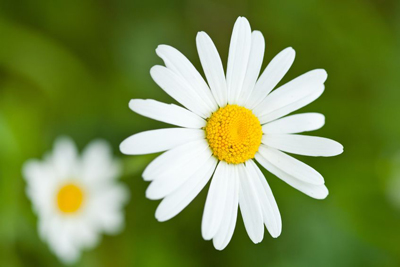 Botanical-based ingredients have a long history of use in personal care products to treat a broad variety of skin conditions. Natural products and their derivatives represent over 50% of all drugs currently used. The World Health Organization estimates that 80% of people in developing countries rely on traditional medicine for their primary health care, and about 85% of traditional medicine involves the use of plant extracts.
Botanical-based ingredients have a long history of use in personal care products to treat a broad variety of skin conditions. Natural products and their derivatives represent over 50% of all drugs currently used. The World Health Organization estimates that 80% of people in developing countries rely on traditional medicine for their primary health care, and about 85% of traditional medicine involves the use of plant extracts.
The earliest recorded use of plants to treat inflammation dates back 4,000 years to the Sumerians who used willow extracts. The active in willow extracts is salicin, a glucoside of salicylic acid with activity similar to Aspirin.
Licorice root has been used for centuries to treat inflammation. The active in the root contains glycyrrhizin and is converted to glycyrrehetic acid in the body.
Looking for botanical anti-inflammatory ingredients for your skincare products?
Prospector has material listings from global suppliers, including technical information, sample request capabilities and more.
Search Ingredients Now
Chamomile extracts were first cosmetically used 2000 years ago by the Egyptians. Recent clinical trials have demonstrated that chamomile cream is nearly as effective as 0.25-percent hydrocortisone cream. The principle active in chamomile is bisabolol.
Colloidal oatmeal has been used topically for centuries to treat skin rashes, erythema, burns, itch, and inflammation. The key actives in colloidal oatmeal are believed to be potent anti-inflammatory agents called avenanthramides. Colloidal oatmeal has even been recognized by the FDA as an effective category one skin protectant.
A word of caution: Anti-inflammatory claims are considered drug claims in the U.S., where you can only make soothing or irritation-reduction claims.
Examples of anti-inflammatory ingredients with documented clinical efficacy:
I also recommend using a Lecithin derivative with the below actives as penetration aids to improve performance.
- SymCalmin (Butylene Glycol, Pentylene Glycol, Hydroxyphenyl Propamidobenzoic Acid) by Symrise is sold as a 5% solution of nature-identical avenanthramides A, B, and C. They are compounds in oats that are responsible for its soothing properties.
- CP Oat Avenanthramides (Glycerin, Aqua/water, Oat Extract) by Oat Services Limited is a 1:1 glycerin water mixture containing 110 ppm actives (avenanthramides AF-1, 2, and 6). Significant anti-inflammatory activity has been seen at levels as low as 1 ppm active in formulations.
- Gorgonian extract BG (Butylene Glycol and Sea Whip Extract) by Vantage Specialty Ingredients are pseudopterosins extracted from Sea Whip which have been shown to have significant anti-inflammatory activity at levels as low as .02% active.
- NET STG (Stearyl Glycyrrhetinat) by Maruzen Pharmaceuticals/Barnet Products is an oil soluble derivative more effective form of Glycyrrehetic acid, the key active in Licorice root.
- Dipotassium Glycyrrhizate by Maruzen Pharmaceuticals/Barnet Products
- Bisabolol Rac. (Bisabolol) by BASF is the active ingredient found in chamomile oil. It is synthetically produced and contains the four isomers which all occur in nature.
- SymRelief 100 (Bisabolol, Hydroxymethoxyphenyl Decanone) by Symrise is a synergistic blend of bisabolol and a ginger extract which claims to target all the major inflammatory mediators.
- Canadian Willowherb (Epilobium Angustifolium Flower/Leaf/Stem Extrac) by Lucas Meyer Cosmetics. 3% Canadian Willowherb is claimed to be more effective than 1% hydrocortisone in reducing UV-induced erythema
References
http://scholar.lib.vt.edu/theses/available/etd-72198-18137/unrestricted/Body.pdf
http://www.livestrong.com/article/175490-natural-alternatives-to-topical-hydrocortisone/
http://www.chemheritage.org/discover/media/magazine/articles/27-2-aspirin.aspx
| Sponsored Products: |
| Australian Sandalwood Seed Oil (Santalum spicatum) |
| Australian Tea Tree Oil (Melaleuca alternifolia) |
Editor’s Note
The products listed by the author are ones with which he has had personal experience. This is not an exhaustive list and formulators are encouraged to explore the full range of botanical anti-inflammatory ingredients available on ulprospector.com.
The views, opinions and technical analyses presented here are those of the author or advertiser, and are not necessarily those of ULProspector.com or UL Solutions. The appearance of this content in the UL Prospector Knowledge Center does not constitute an endorsement by UL Solutions or its affiliates.
All content is subject to copyright and may not be reproduced without prior authorization from UL Solutions or the content author.
The content has been made available for informational and educational purposes only. While the editors of this site may verify the accuracy of its content from time to time, we assume no responsibility for errors made by the author, editorial staff or any other contributor.
UL Solutions does not make any representations or warranties with respect to the accuracy, applicability, fitness or completeness of the content. UL Solutions does not warrant the performance, effectiveness or applicability of sites listed or linked to in any content.



Yessir. Been using those goodies and more since 1977. Non stop. Bought shares in Fytokem when then first came
out with Willowherb Extract. Was the first dude in Dallas to use Dragoco products before they got Rainer on the road.
So True, Mr. Bill Basinski